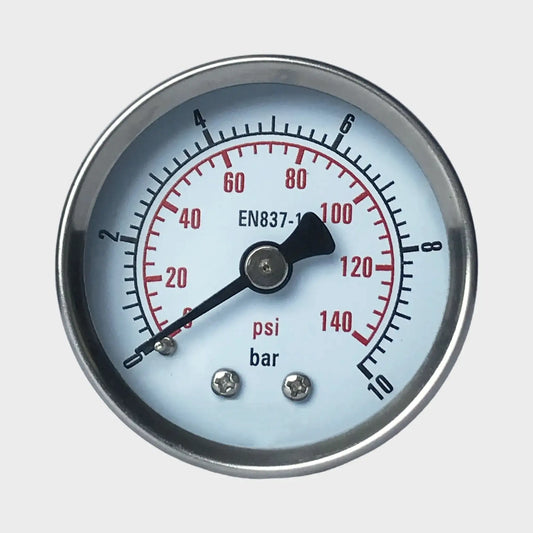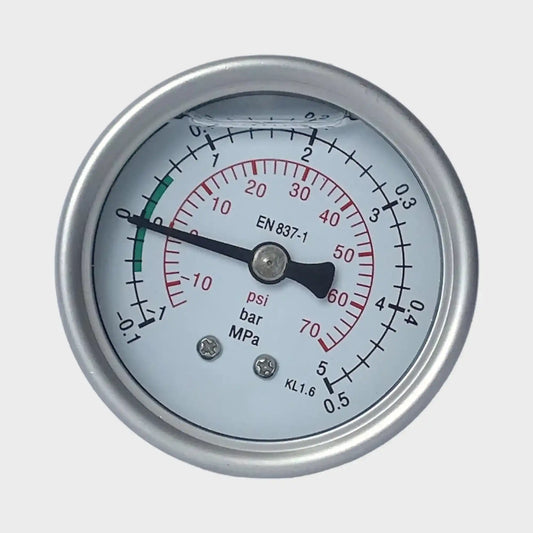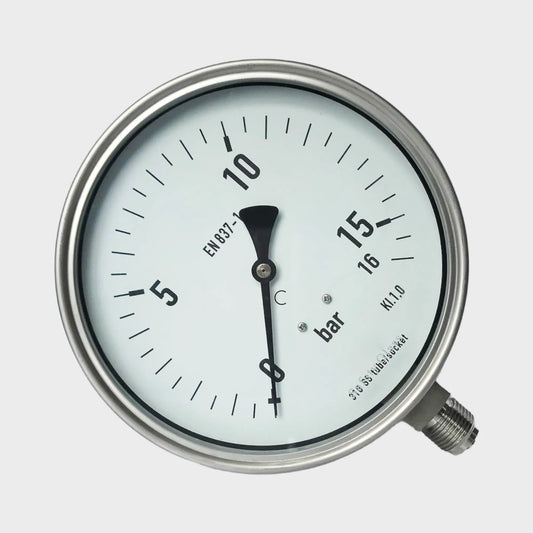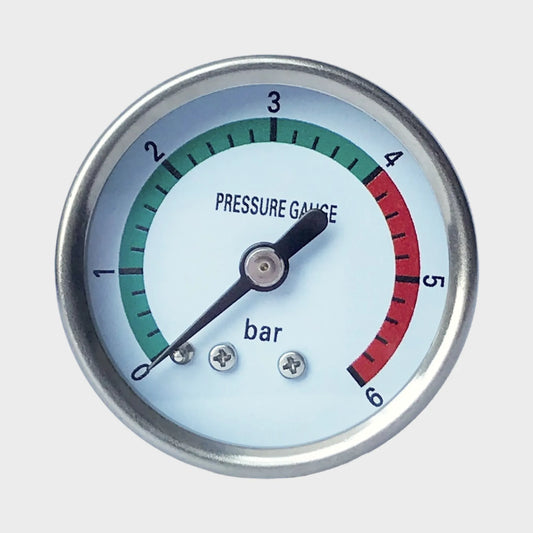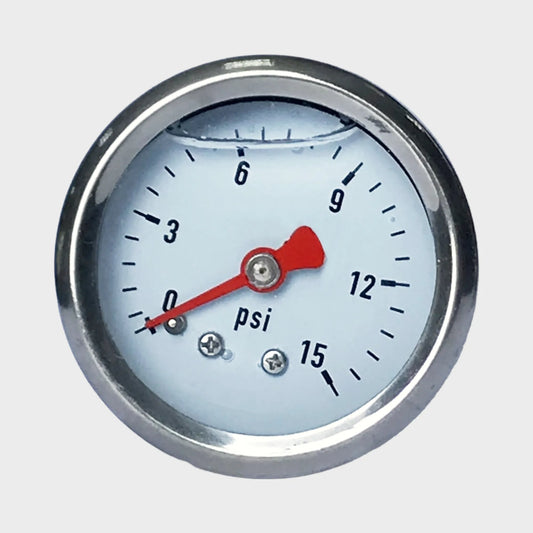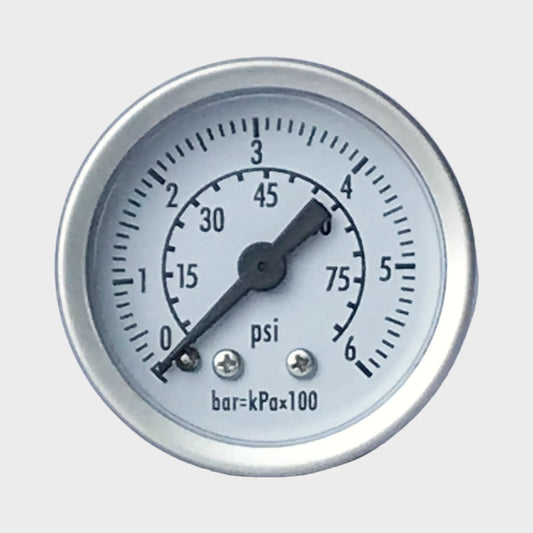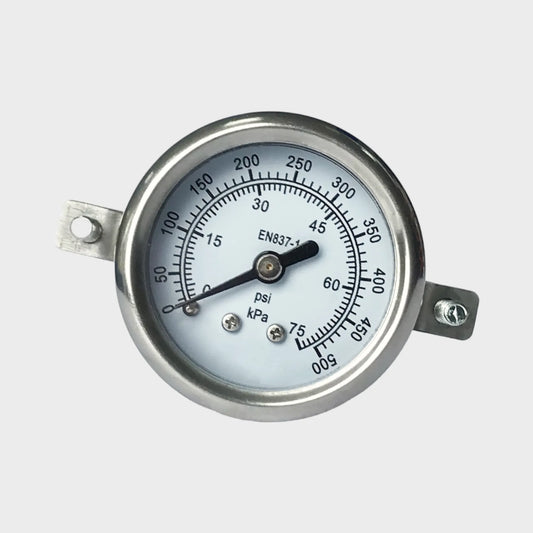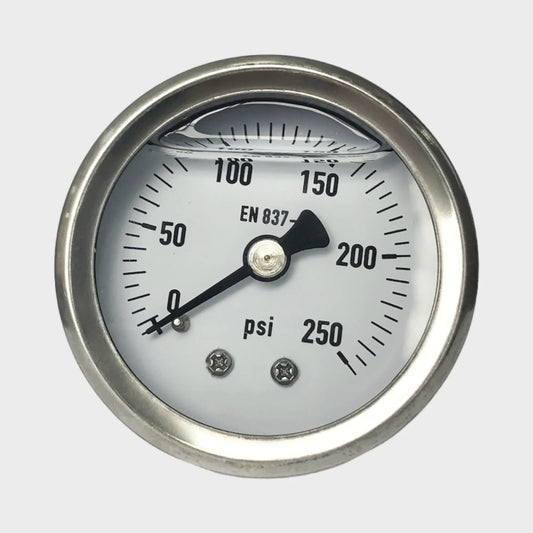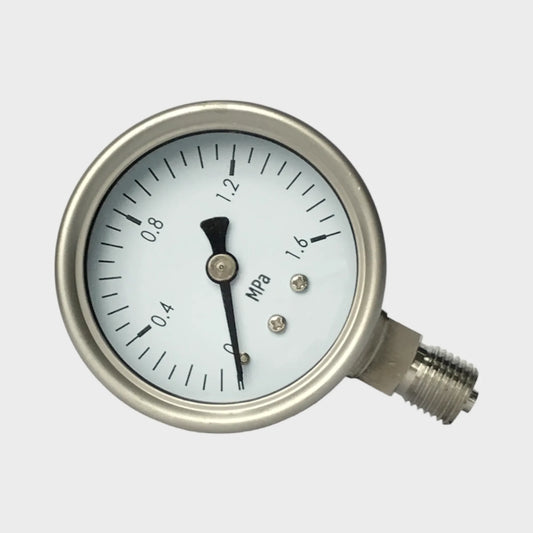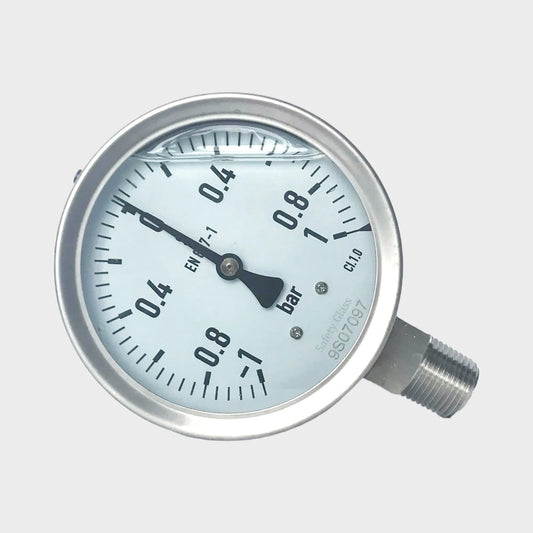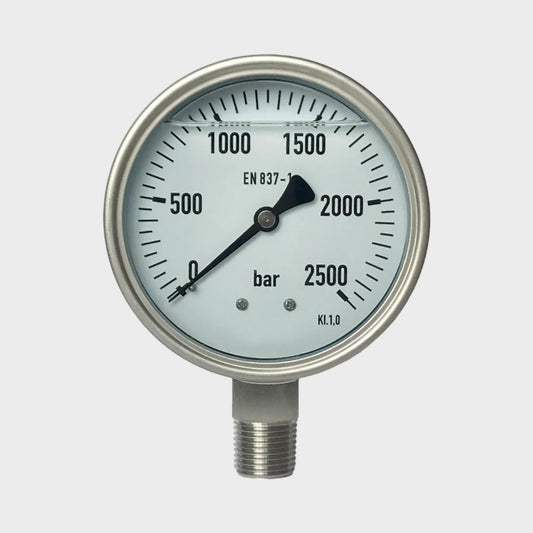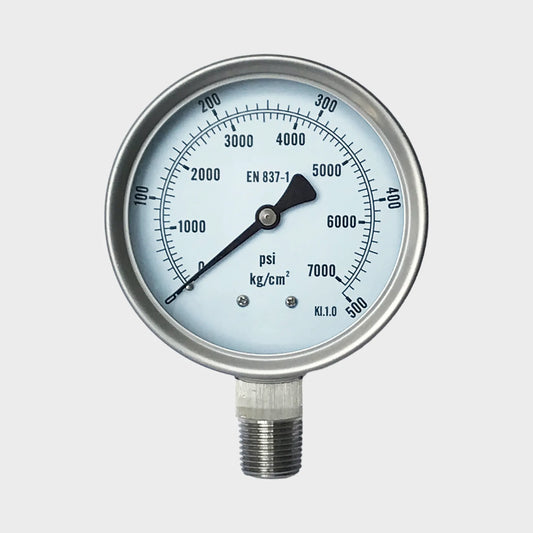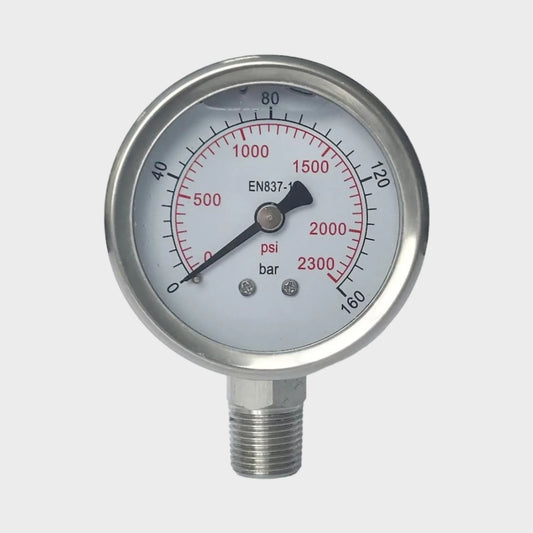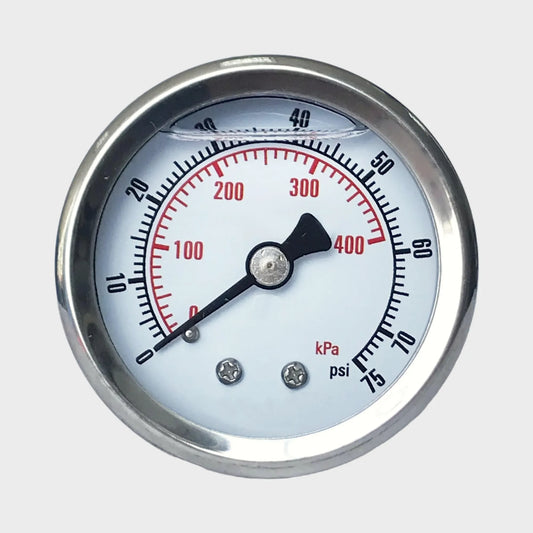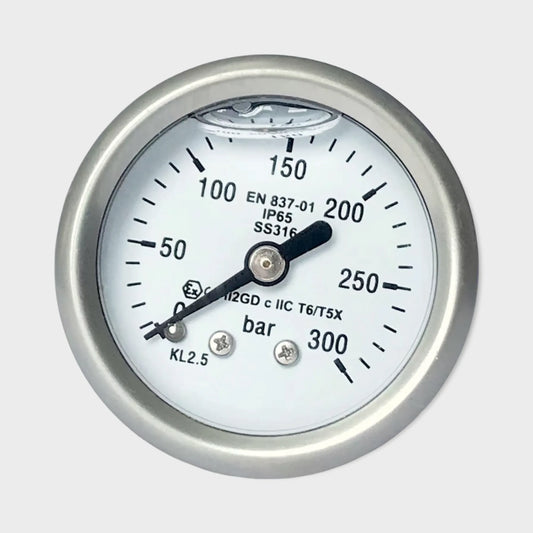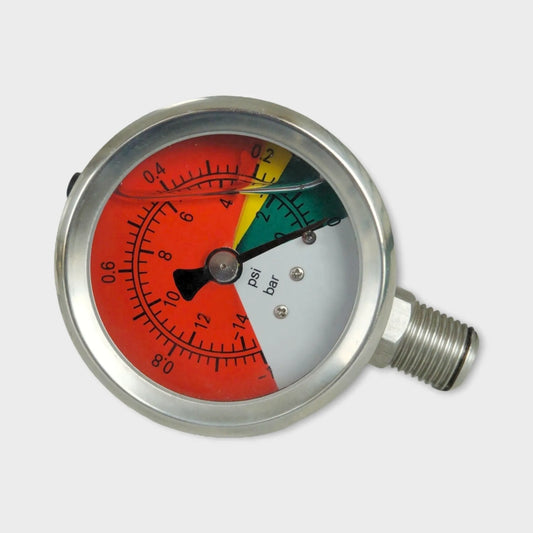-
2 Inch Stainless Steel Well Tank Pressure Gauge Axial Mount
Regular price $2.52 USDRegular priceUnit price per -
Pressure Gauge 5 bar Back Mount Glycerine Filled Bayonet Ring
Regular price $7.58 USDRegular priceUnit price per -
Pressure Gauge HVAC 6 Inch Dial Static Pressure 316SS Tube
Regular price $19.98 USDRegular priceUnit price per -
Water Pressure Gauge on Boiler Stainless Steel Material Bourdon Type
Regular price $3.19 USDRegular priceUnit price per -
0 to 15 Psi Pressure Gauge Filled with Glycerine 40mm Dial Red Needle
Regular price $3.59 USDRegular priceUnit price per -
Pressure Gauge 6 bar For Liquid and Gas Stainless Steel Bourdon Tube
Regular price $3.59 USDRegular priceUnit price per -
KPa Pressure Gauge with Mounting Bracket 500 Kpa
Regular price $4.20 USDRegular priceUnit price per -
50mm Glycerin Pressure Gauge 250 Psi for Gas Line
Regular price $4.85 USDRegular priceUnit price per -
Steam Pressure Gauge Stainless Steel Bourdon Tube
Regular price $7.58 USDRegular priceUnit price per -
Stainless Steel Gas Pressure Gauge Glycerine Filled Lower Mount
Regular price $14.55 USDRegular priceUnit price per -
Hydraulic Pressure Gauge 2500 bar Stainless Steel Material with Glycerin Filled
Regular price $14.88 USDRegular priceUnit price per -
Psi Pressure Gauge 500 Kg/cm2 7000 Psi SS316L Material
Regular price $15.20 USDRegular priceUnit price per -
EN837-1 Pressure Gauge Psi And Bar Dual Scale Glycerin Manometer
Regular price $3.79 USDRegular priceUnit price per -
50mm 400kpa 75psi Pressure Gauge For Air Compressor
Regular price $2.49 USDRegular priceUnit price per -
Pressure Gauge 300 Bar Made by SS316 with Glycerin Filled
Regular price $3.79 USDRegular priceUnit price per -
Vacuum Manometer U Tube Type Red Dial with Silicone Oil Filled
Regular price $3.79 USDRegular priceUnit price per
Understanding Hydraulic Pressure Gauges: A Comprehensive Guide
Introduction:
Hydraulic pressure gauges play a pivotal role in monitoring and maintaining the optimal functioning of hydraulic systems. From ensuring safety to facilitating precision in operations, these gauges are indispensable components. In this article, we delve into the significance of hydraulic pressure gauges, their variations, and their importance in hydraulic systems.
Importance of Hydraulic Pressure Gauges:
Hydraulic systems operate under high pressures, making it crucial to monitor and control these pressures accurately. This is where hydraulic pressure gauges come into play. They provide real-time feedback on the pressure exerted by hydraulic fluids within the system, allowing operators to make informed decisions and prevent potential hazards.
Variations in Hydraulic Pressure Gauges:
1. Hydraulic Pressure Gauge 3000 PSI:
- Designed to measure hydraulic pressure up to 3000 pounds per square inch (PSI).
- Ideal for applications where moderate pressure levels are involved, such as in industrial machinery and automotive hydraulics.
- Ensures precise pressure monitoring within the designated range, promoting operational efficiency and safety.
2. Hydraulic Pressure Gauge 5000 PSI:
- Capable of measuring hydraulic pressures up to 5000 PSI.
- Suited for high-pressure hydraulic systems found in heavy-duty machinery, hydraulic presses, and hydraulic power units.
- Provides accurate readings even under extreme pressure conditions, facilitating reliable performance and preventing system failures.
3. Hydraulic Oil Pressure Gauge:
- Specifically designed to measure the pressure of hydraulic oil within the system.
- Offers insights into the lubrication system's efficiency and helps prevent damage to hydraulic components due to insufficient oil pressure.
- Vital for maintaining optimal oil pressure levels, ensuring smooth operation and prolonging equipment lifespan.
Significance of High-Pressure Hydraulic Gauges:
High-pressure hydraulic gauges are engineered to withstand the rigors of demanding industrial environments where pressures exceed conventional limits. These gauges not only provide accurate readings at high pressures but also ensure durability and reliability, making them indispensable in critical applications such as aerospace, oil and gas, and heavy machinery manufacturing.
Integration of Pressure Gauges in Hydraulic Systems:
Pressure gauges are integrated into hydraulic systems at strategic points to monitor pressure fluctuations and detect abnormalities promptly. They are often installed at crucial junctures such as pump outlets, valve ports, and hydraulic cylinders to provide comprehensive pressure insights throughout the system. This proactive approach allows operators to identify potential issues before they escalate, minimizing downtime and maintenance costs.
Conclusion:
Hydraulic pressure gauges are indispensable components of hydraulic systems, enabling precise pressure monitoring and ensuring operational safety and efficiency. From standard pressure gauges to high-pressure variants, each plays a vital role in maintaining optimal hydraulic performance. By leveraging the insights provided by these gauges, operators can effectively manage hydraulic pressures, mitigate risks, and enhance overall system reliability.

